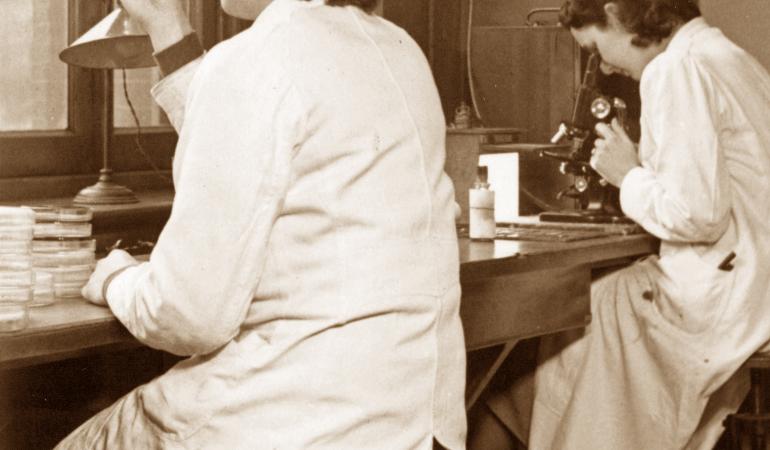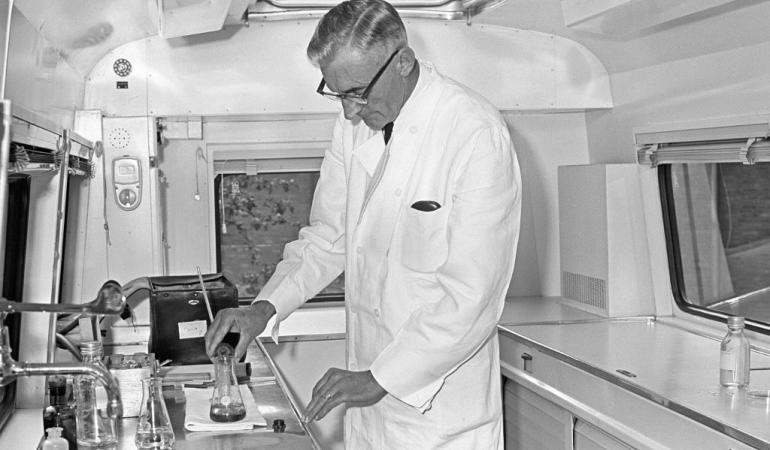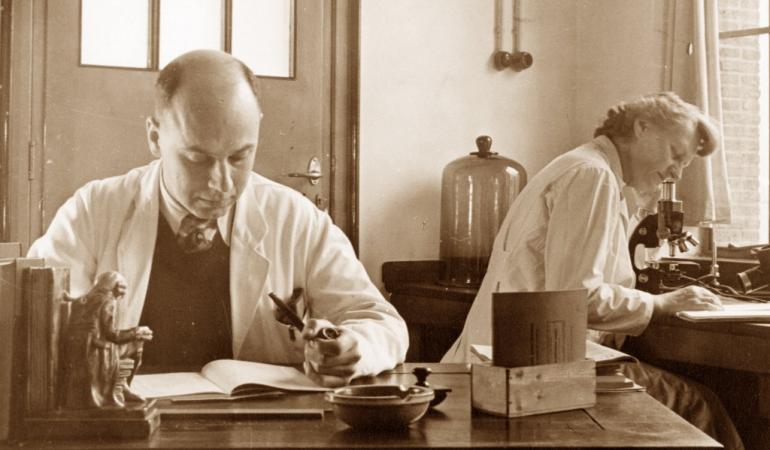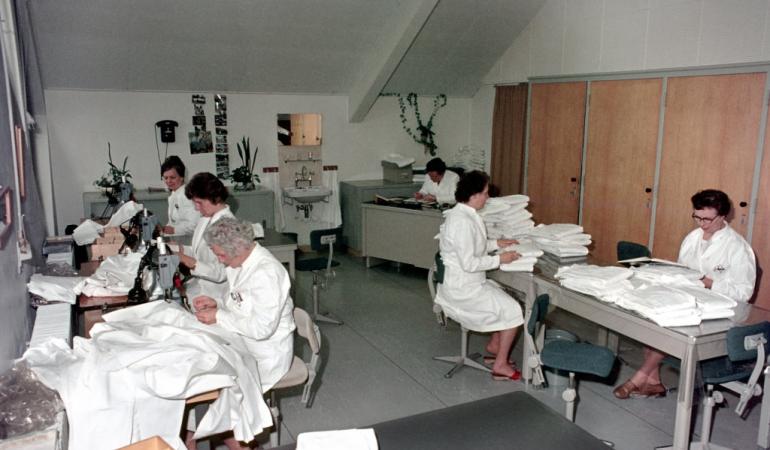
110 Years of RIVM: day-to-day work
For 110 years, RIVM has been working towards a healthy population in a healthy human environment. This series of photos offers a glimpse behind the scenes of day-to-work work at RIVM throughout its history. Scientists, laboratory researchers and support staff have always had a passion for their work. In 110 years, that aspect has never changed.
Researchers at the Sterrenbos complex in Utrecht
On the photo: 1917 – laboratory researchers from the Bacteriological-Biological Department
In 1909, a small group of researchers fought valiantly against cholera and other life-threatening diseases. Saving lives was their main motivation.
Working conditions in the laboratory were hard. The institute was understaffed, with far too few researchers to handle the workload, working in cramped spaces. In addition, the demand for its services increased quickly.
The laboratory researchers on the photo worked at the ‘Central Laboratory for the State Inspectorate’ in the Sterrenbos complex, situated on the Catharijnesingel canal in Utrecht. This marked the start of the organisation that would become RIVM as we know it today.
Diphtheria research at the National Institute for Public Health
On the photo: 1950 – laboratory researchers working on diphtheria
Diphtheria (also known as diphtheritic croup) is a very serious illness caused by a bacterial infection transmitted from person to person by coughing. At one time, diphtheria was one of the most common causes of death in children.
The National Immunisation Programme was launched in 1957. It included the DPTP vaccine, in which the D stands for diphtheria. Once children were vaccinated against the disease, diphtheria vanished from the Netherlands almost entirely. The DPTP vaccine is still part of the National Immunisation Programme today.
In 1934, the Central Laboratory merged with the State Serology Institute, becoming the National Institute for Public Health (RIV (National Institute for Public Health)).
Environmental research in a mobile laboratory
On the photo: 1960 - Mr Prince tests samples in the mobile laboratory
It became apparent in the 1960s that air and water quality were in very bad shape. An upstream chemical spill poisoned the Rhine River with endosulfan, resulting in massive fish die-offs. This pesticide incident and observations of growing air pollution in the Rhine delta region near Rotterdam were contributing factors in the establishment of national and regional monitoring networks in 1969.
In 1972, the National Institute for Public Health (RIV (National Institute for Public Health)) provided an essential contribution to the first Dutch environmental policy plan, the Policy Report on the Urgency of Environmental Hygiene, which established a connection between public health and the environment.
Due to the expertise that the National Institute for Public Health already had in automated data processing, the institute was designated a national reference centre for measuring air pollution in 1973. From that time on, many of our employees worked to prevent pollution and support a healthy human environment.
The M for ‘milieu’ (environment) was added to the name in 1984, when the name was initially changed to the National Institute for Public Health and Environmental Hygiene. It was later amended to the name we use today: RIVM, the National Institute for Public Health and the Environment.
Vaccine against tuberculosis
On the photo: 1950 – Mr H.P. Landsberg (physician) and Ms A.W. de Lind van Wijngaarden
They worked in the laboratory operated by the department of Serology and Vaccinology. At the time, the department was working on production of the BCG (Bacillus Calmette-Guérin) vaccine against tuberculosis.
By now, we only see about 800 cases of tuberculosis every year in the Netherlands. The disease can generally be treated with a cocktail of various antibiotics.
Lab coats all neat and clean again
On the photo: 1962 – the linens room in the attic of the U-building in Bilthoven.
In its earlier days, RIVM housed many auxiliary services under its own roof, or rather on its own grounds. The pivotal point for all repair work on company clothing – which often meant the classic white lab coats – was the linens room.
We also had our own instrument-making facility at RIVM, and our own utility room where lab equipment was cleaned and sterilised.




